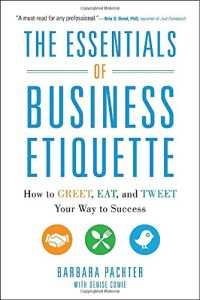Join getAbstract to access the summary!

Join getAbstract to access the summary!
Barbara Pachter and Denise Cowie
The Essentials of Business Etiquette
How to Greet, Eat, and Tweet Your Way to Success
McGraw-Hill, 2013
What's inside?
Master the rules of social interaction and presentation to exude confidence and professionalism.
Recommendation
While business environments and means of communication have changed, the need to present yourself professionally, behave appropriately and exhibit good manners has not. A major etiquette gaffe could cost you a job, lose you a promotion or cut you out of a deal. Business-etiquette expert Barbara Pachter, writing with journalist Denise Cowie, presents 101 protocols – drawn from Pachter’s blog, speeches and articles – as guidelines for professional behavior. This handy manual covers making introductions, composing emails and choosing appropriate work attire – and it explains which fork to use during business meals. Her laundry list may seem like dry reading, but getAbstract recommends this excellent primer to young people entering the workforce and to those from other cultures seeking to understand US business etiquette.
Summary
About the Authors
Business-etiquette coach Barbara Pachter’s books include When the Little Things Count…and They Always Count and The Power of Positive Confrontation. Journalist Denise Cowie worked for The Philadelphia Inquirer.

















Comment on this summary